
We selected in this post some suggestions for Back to School Project for Early Childhood Education, with the objective of developing in the child the pleasure of staying in school; Respect the differences and ways of each child; Highlight important socialization points; Encourage the child to play, learn and make new friends, among other things.
See too:
For the little ones, for the most part, it is the first time they will have contact with this new space, which is the school. No longer just living with your family, with your everyday friends, to immerse yourself in a new world, full of novelties, with a lot of different faces.
Therefore, it is important at this first moment to go through the welcoming process. The name already says: to be welcomed, received, snuggled. Thus, we education professionals need to have the sensitivity and common sense to realize that for the little ones, everything is new and, generally, what is new is sometimes frightening. (Learn more at:
And it was with all this in mind that we selected these excellent suggestions in this post. “Back to School Project for Early Childhood Education” check out:
Index
04 lessons of 50 minutes each.
It would be interesting to have already introduced the work with the calendar with the students. This can be inserted in the initial moments of the class, when discussing the day's routine, in the conversation circle.
1- Teacher, this class aims to work on back-to-school activities, right after the July holidays, in order to welcome students in the first days of class. These are activities that bring relaxation and interaction between students and teachers, aiming at readapting to the school environment.
2- To start the conversation and instigate this discussion, we suggest that the teacher talks with the students in a circle about what they did on vacation. This should be a time where the teacher needs to listen to all students and write down everything they say.
3- At the end of the conversation with the students, take back everything that was said with them, through the notes made by the teacher. Explain that it would be interesting to tell other classmates and family members what this class did on vacation. Instigate students with the following question:
– At this point, suggestions may appear, such as: drawing a picture, placing photos, etc. But the objective of the activity will be to work on the importance of writing as a social function. Therefore, propose to the group, the writing of a collective text, which can be done through information from the records about the vacation adventure.
– The teacher will act as a scribe and on a poster, prepare with the students the writing of this text, which will have an informative character. Consider what and how we would write an informative text, creating a logic for the writing, observing the characteristics of this type of text and instigating the attempt to write the words, observing the number of letters, as well as which ones are necessary for the writing of the words.
1- After exploring the construction of the collective text with the students, propose a more playful, relaxed moment. Take the students out of the classroom and paint on tiles, with the theme “Our Vacation 2013”, in order to illustrate the collective text.
Observation: Teacher, if your school does not have a space for this type of painting, put brown paper glued to the wall in a space outside the classroom and propose the painting.
2- Register this moment with photos and together with the collective text, organize an exhibition later on the wall outside the classroom, to socialize the productions of your students with other colleagues and their relatives.
1- The teacher must have previously worked on the calendar with the students. At this point, it is important to go back to the history of the emergence of the calendar, how it is used in our homes and how we can consult it.
– The emergence of the calendar took place through the need that men had to count time and control their activities. The calendar was a way of recording in writing the days where the dates of the moons, planting and harvesting were marked. Also talk to students about dividing the calendar into twelve months, demonstrate the name of the months and that within the month there are weeks. Also show that each week has seven days and that each day of the month corresponds to a specific number.
– At our school we use the calendar to mark important dates such as school days, holidays, birthdays, trips etc. Therefore, before the start of the July vacation, we set the last day of school and the day we will return to school.
2- When returning from vacation, ask the students: how can we know how many days we are on vacation? Write down your hypotheses and compare with them what are the possibilities for discovering the exact number of days we spend on vacation. Ask students to observe the calendar and propose that they count the days we take vacations.
3- Right after discovering the exact number of days we are on vacation, propose that the students represent this amount with concrete material (example: Popsicle sticks). Try to write the numeral that corresponds to the number of days, in our case it was 16 days.
The assessment will be made through observation throughout the entire process of student involvement in the developed activities.
The observations can be noted on a clipboard available to the teacher at the time of the activities, containing space for individual records of each student.
Guiding questions for observation of each student:
After we posted the project for back to school elementary school, several people contacted us via e-mail and comments on the posts also asking for some suggestions for early childhood education, check out:
School should be a welcoming and pleasant place to be. When they arrive at school in the 1st day of class, several things go through the children's heads. In this case, it is necessary to receive everyone with great joy and pleasure, so students are happy to stay in the environment and parents leave safe, knowing that their children are in great company.
Give each student a very special gift, so they can see that they are adorable and dear children.
Always thinking of making it easy for you, we decided to make the “Back to School Project for Early Childhood Education – First week of school”, shown above for free PDF download, check out the following link and download:
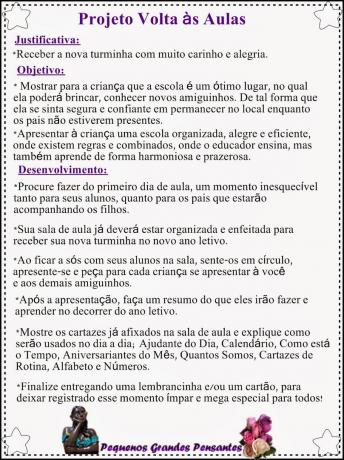

This is the first project I will do with my preschool students.
The beginning of classes is a moment that mixes joy, sadness, anxiety, novelty and crying. Precisely because it is something new for the child, it requires an adjustment period, especially for those who are going to school for the first time. The adaptation phase can last a few minutes, hours, days and even months… it depends on the child. It is up to the school to welcome the children and adapt to the new space in the best possible way.
Math
Hold a game of games aiming that the important thing is for everyone to have fun (sack race, jump rope, blind snake, potato race, freshman show, chair dance).
Teacher observation and record of student involvement, interest and participation
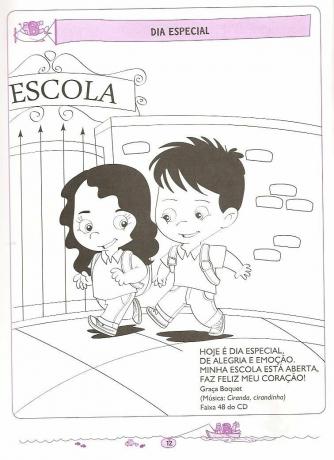

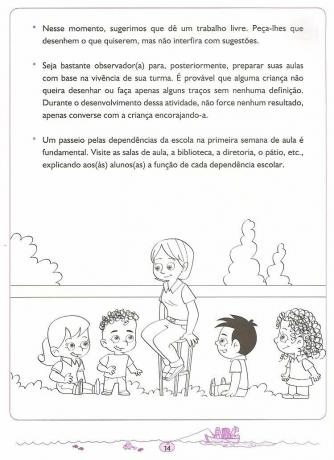

This dynamic shows that the people know well who is on the side, our knowledge is very limited and restricted to the environment we are in.
This dynamic is very useful know what students like and that they do outside of school to make the class more interesting and also objectively show how to use in your daily life what are they learning.
Give each student a piece of paper where they will have to write in it 3 sentences about themselves, one of which it will be false. But they shouldn't write obvious things like ‘I have green eyes’ and yes things that friends would know about him, like 'I've been to Japan', for example.
Ask them to put their name and write the 3 sentences (and of course I'll save these papers for later use when preparing the classes), then they hand them all to me. Choose a paper at random and read the first sentence, asking whose it is. The class makes its guesses and I instruct the students that when they identified what they wrote disguise and also say they think it's So-and-so.
Write down the name of the person most of the class found in front of the sentence. who was the owner and I choose another role. Continue reading the first few sentences of each one, then I start to read the second and finally the third sentence, always noting in front of the sentence who the class thought it was.
At the end, everyone is already anxious, read the sentence and say: this one they thought it was from So-and-so, in fact, it's from Sicrana. and make some questions about the sentence to the student. Do this until you finish and then ask students what they thought of the game.
They usually find it fun because they get to know more about colleagues and are also surprised to know relatively little about them.
See more at: How to make classes more dynamic in Early Childhood Education
Back to school is a crucial time in the school year. The student is often discouraged from attending the school environment, so it is important that the return of the student is accompanied by a low-stress work, very playful and that allows them to express. In this way, the school shows concern for his self-esteem and he ends up finding a place receptive, kind and pleasant, and these factors can be great facilitators throughout the school year.
Another tip: Back to school activities 1 and 2 year
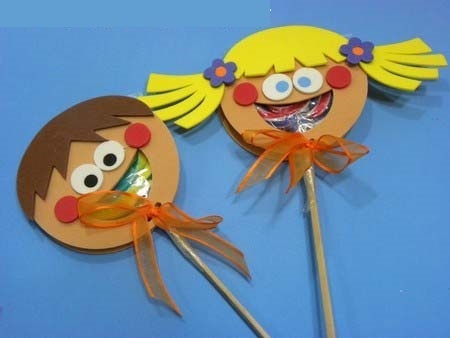
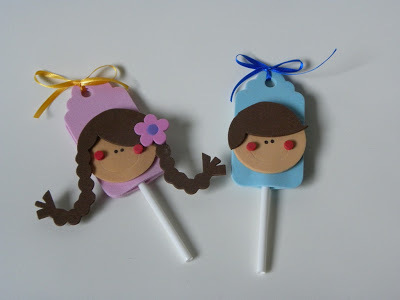
See more at:
What did you think of the suggestions and tips for the Project Back to School for Early Childhood Education? If you liked it, please let us know in the form of a comment with your opinion and suggestions for other posts.
Subscribe to our email list and receive interesting information and updates in your email inbox
Thanks for signing up.


